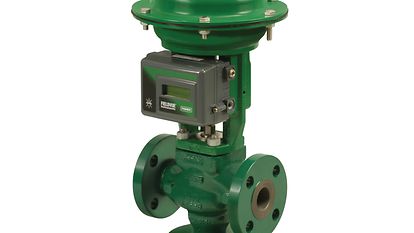The Role of Control Valves in Fluid Flow Administration Equipment
The Role of Control Valves in Fluid Flow Administration Equipment
Blog Article
Maximize Structure Workflow With Premium Automation Controls for Controllers
In the realm of modern-day building operations, the assimilation of premium automation controls for controllers has actually come to be an essential facet in making certain optimal efficiency and performance. By utilizing the power of costs automation controls, structures can attain unequaled levels of power efficiency, system dependability, and cost-effectiveness.
Enhancing Structure Performance With Automation Controls
Improving structure performance is paramount in today's architecture and design industry, with automation controls playing a critical role in accomplishing ideal performance. By integrating advanced automation controls right into constructing developers, systems and engineers can develop wise, energy-efficient frameworks that respond dynamically to changing environmental problems. These controls permit the seamless monitoring and administration of numerous structure features, such as lights, a/c systems, and protection protocols, leading to improved operational effectiveness and expense savings.
Automation controls enable real-time data analysis and modifications, ensuring that structures run at peak efficiency degrees while reducing energy waste. Via the use of sensors, actuators, and streamlined control systems, buildings can adjust their settings based upon occupancy patterns, exterior climate conditions, and time of day. This degree of automation not only boosts the comfort and performance of building owners however also adds to sustainability efforts by minimizing general power intake and carbon discharges.
Maximizing Power Cost Savings With Costs Controls
With the assimilation of costs automation controls right into developing systems, designers and engineers can further enhance power efficiency, improving the total operational performance of structures. Costs controls offer innovative features such as tenancy sensing units, scheduling abilities, and flexible algorithms that allow precise surveillance and modification of power use. By leveraging these capabilities, buildings can dynamically react to altering tenancy patterns and ecological conditions, making sure that power is just eaten when needed. Additionally, premium controls promote the coordination of various building systems, such as COOLING AND HEATING, lighting, and shading, to operate in harmony towards minimizing power wastefulness. Via real-time data analytics and predictive modeling, these controls can identify ineffectiveness and chances for enhancement, enabling for constant refinement of energy-saving techniques. Generally, the execution of costs automation controls not only decreases energy expenses however likewise adds to a more sustainable and eco-friendly constructed setting.

Improving System Efficiency and Reliability
The assimilation of costs automation manages right into developing systems improves operational effectiveness, guaranteeing ideal performance and dependability. In addition, premium automation controls supply data analytics that offer understandings into system efficiency patterns, enabling for continuous optimization and fine-tuning of procedures. Generally, the consolidation of premium automation regulates raises system performance and integrity, ultimately adding to a much more lasting and effective building environment.
Reducing Operational Prices With Automation Innovation
The application of automation innovation in building systems not just improves efficiency and reliability however also plays a crucial duty in driving down functional costs. control valves. By leveraging innovative automation controls, building operators can maximize energy usage, lower waste, and improve maintenance procedures. Automation technology enables exact surveillance and control of various building systems such as HVAC, lighting, and safety, Recommended Site causing a lot more reliable operations. Through the combination of data and sensing units analytics, automation systems can identify inefficiencies and automatically adjust setups to ensure optimum efficiency while decreasing power use. Furthermore, automation innovation helps in anticipating upkeep by detecting potential concerns early, protecting against pricey fixings and downtime. By systematizing control and automating routine tasks, operational expenses can be substantially minimized, freeing up resources for various other necessary building upgrades or investments. Generally, the tactical implementation of automation modern technology not only improves functional effectiveness yet likewise contributes to lasting expense financial savings for structure owners and supervisors.
Enhancing Control and Flexibility for Operations

Additionally, these systems enable smooth combination with various other building monitoring innovations, such as power tracking systems and security procedures, creating an extensive ecosystem that enhances operations and improves total efficiency (control valves). The capacity to remotely gain access to and change setups additional improves control and adaptability, permitting for speedy feedbacks to changing functional needs. Eventually, spending in costs automation controls not only enhances the day-to-day operations of a building however additionally results in long-lasting expense financial savings and sustainability advantages
Conclusion
To conclude, costs automation controls for controllers play an essential function in maximizing structure operations. These controls enhance efficiency, make the most of power financial savings, boost system performance and dependability, lower operational expenses, and improve control and adaptability for operations. Carrying out automation modern technology in buildings can result in considerable enhancements in general functional performance and sustainability. It is vital for organizations to buy premium automation manages to accomplish far better structure efficiency and functional outcomes.
By using the power of costs automation controls, buildings can achieve unmatched degrees of power effectiveness, system dependability, and cost-effectiveness. On the whole, Read Full Report the incorporation of costs automation manages elevates system efficiency and dependability, inevitably contributing to a more lasting and efficient structure environment.
Automation modern technology allows precise surveillance and control of different structure systems such as Lights, heating and cooling, and safety, leading to extra reliable operations. These controls improve performance, make the most of power cost savings, boost system performance and reliability, minimize functional costs, and improve control and versatility for procedures. It is vital for companies to spend in costs automation controls to achieve much better structure efficiency and functional end results.
Report this page